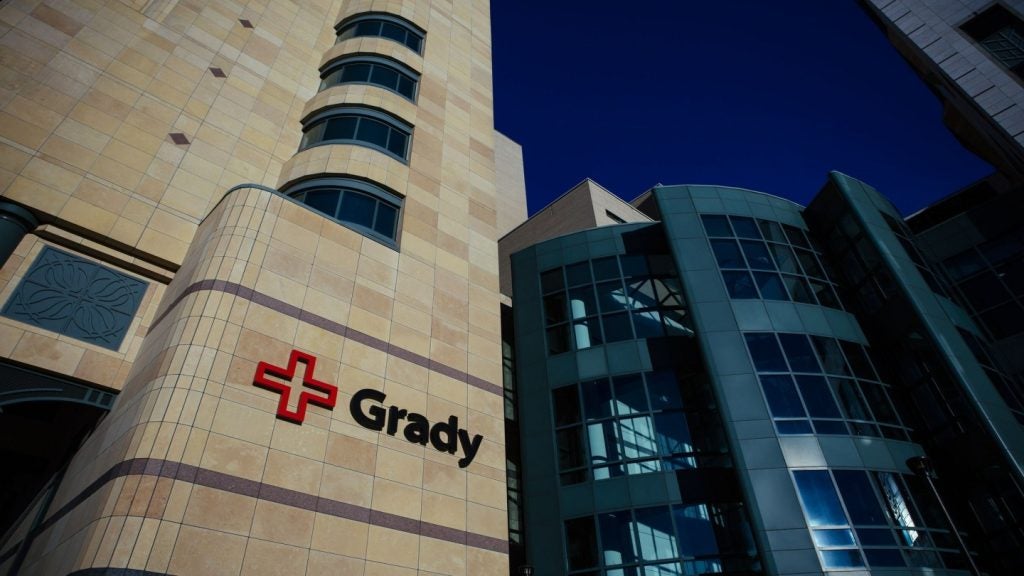
Electronic medical records (EMRs) have the potential to improve the delivery of healthcare services, but in some nations around the world, office-based physicians have been slow to adopt such systems. In the US, this is causing large problems for the government’s efforts to adopt electronic health.
To accelerate the adoption of EMR by physicians and hospitals, the US Government has announced a $19bn stimulus package for healthcare IT (HCIT). As physicians move to take advantage of the stimulus incentives and implement an EMR, the major players in the market are moving towards collaborations in an attempt to reach office-based physicians effectively.
An EMR is a computer-based patient medical record that facilitates the access of data by healthcare practitioners from any given location. In spite of studies showing positive results after implementation, the adoption of EMR has been minimal with office-based physicians in the US.
To encourage EMR adoption, the US Government introduced an economic stimulus act in 2009. The act assures incentive payments to those who adopt and use “certified EMRs” and, eventually, plans on reducing Medicare payments for those who do not use an EMR. These incentives have driven EMR adoption among physicians.
To capitalise on the huge demand created by the stimulus act, HCIT companies are looking for technological partnerships, physician alliances and other marketing affiliations. Such collaborations will help the companies to reach office-based physicians with minimum capital costs.
See Also:
The EMR segment is now the fastest-growing one in the HCIT market. This segment, valued at $1.59bn in 2008 is expected to show a growth of 26.5% over the 2008–2015 period to reach $8.34bn in 2015.
How well do you really know your competitors?
Access the most comprehensive Company Profiles on the market, powered by GlobalData. Save hours of research. Gain competitive edge.

Thank you!
Your download email will arrive shortly
Not ready to buy yet? Download a free sample
We are confident about the unique quality of our Company Profiles. However, we want you to make the most beneficial decision for your business, so we offer a free sample that you can download by submitting the below form
By GlobalDataThe huge demand, expected to be created by the economic stimulus package, will drive growth in this segment in the future.
When opportunity knocks
A national survey of 2,758 physicians on the use of EMR by the New England Journal of Medicine has revealed that only 4% of physicians have an extensive, fully functional electronic records system and another 13% utilise a basic system. Physicians using these systems said that the quality of care they offered increased, as did patient and physician satisfaction when EMR was introduced.
Among the remaining 83% of respondents without an EMR, 16% reported that they had purchased but not yet implemented the system and another 26% said that they had plans to purchase an EMR system within two years. Financial barriers remained the major cause for this low adoption of EMRs. Other factors restraining use of EMRs included:
- the inability of a system to match the physicians’ needs
- concern about the return on investment
- concerns that a purchased system would become obsolete.
To indirectly encourage physicians to adopt an EMR a new act, The American Recovery and Reinvestment Act (AARA), was passed by the US Government in 2009. The act includes the allocation of substantial amounts of money for the HCIT industry.
The ARRA is an economic stimulus package enacted by the US congress on 17 February 2009 to provide a stimulus to the US economy in the wake of the economic downturn. It includes federal tax relief, expansion of unemployment benefits, social welfare provisions, and spending for education and healthcare. In the ARRA, HCIT alone was allocated $19bn.
The law provides incentives ranging from $44,000 to $64,000 for a period of five years, to physicians who deploy and demonstrate “meaningful use” of certified EMRs (the definition of “meaningful use” is being decided by the Department of Health and Human Services). The law is expected to be enforced as early as 2011.
Also included in the ARRA is a deduction in Medicare reimbursements of as much as 3% if a physician hasn’t adopted an EMR by 2015. The sooner a provider is ready to go with EMR, the better their access will be to the funds and ability to avoid penalties. As a result, physicians and healthcare organisations are now looking to adopt more EMR technologies and major companies in the market are vying for various collaborations to reach office-based physicians.
Out in the market
As a result of the ARRA, HCIT companies have been developing greater relationships with physicians. A number of new programmes have started up to drive e-health initiatives.
Healthcare services and technology company McKesson, for example, started the Physician Alliance Program which includes its partner network. It now has a network of hospitals and health systems across the US that have a contractual relationship with McKesson.
Since its launch in October 2008, McKesson has signed agreements with value added resellers (VARs) that represent more than 3,300 physicians nationwide. Further, in April 2009, the program has signed another three resellers to utilise its EMR solution. The latest hospitals and health systems to sign contracts for the Physician Alliance Program include:
- Fairfield Medical Center, Ohio with 430 affiliated physicians
- Carroll Hospital Center, Maryland with 435 affiliated and 40 employed physicians
- Eisenhower Medical Center, California with more than 425 affiliated physicians.
The stimulus package has also led companies to invest more in R&D. In March this year, IT vendor Bostech Corporation signed a technology partnership with Orchestrate healthcare to develop practice management solutions based on open standards and a more open architecture.
Open standards promote easy interoperability of applications – to date, no open solutions exist. The open, yet integrated, healthcare system enables organisations to do more with existing resources – providing very cost-effective solutions. Vendors will often sell product at very low prices, making money instead from services offered.
Such collaborative, open and integrated health solutions encourage health organisations not only to comply but also benefit from the ARRA, allowing them to openly bridge and exchange content between their legacy applications. It allows the companies to reap tangible benefits in terms of efficiency and be rewarded monetarily by the government’s healthcare initiative.
There is little surprise so many companies are trying to get in fast with the EMR market, especially in the US. Overall, the EMR market is predicted to grow at a CAGR of 26.5% between 2008 and 2015 to reach $8.34bn in 2015. Advances in terms of technology, coupled with the stimulus incentives by the government will ensure widespread EMR adoption. Better still for practitioners, companies will now be bending over to make solutions attractive for all users, and with more competition in the
market, as quality goes up, cost is surely likely to come down.
The report, ‘Stimulus Package to Electronic Medical Records (EMR): Collaboration Opportunities’ is available to purchase via GlobalData’s Report Store (www.global-market-research-data.com)







